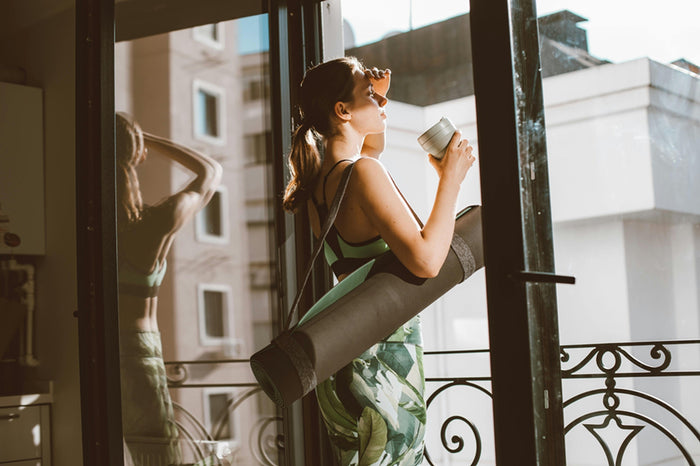It’s safe to say that the past few years have possibly been some of the most stressful and unsettling for everyone. Plenty of people have turned to meditation and yoga for wellbeing and anxiety relief, as well as introducing the use of supplements like The Relax Capsules to help them feel calmer.
Yoga is a fantastically accessible exercise, as you don’t need any equipment to take part, and there are a heap of beginner's variations for first timers. There have even been recent studies that have shown that yoga is not just for mental wellness, but actually benefits your cardiovascular health and wellbeing too. So, if you have been putting off getting started with yoga because it seems too Bohemian and spiritual for you, then you might want to rethink your procrastination!
The results from a 3-month yoga study are in
A study that has appeared in the Canadian Journal of Cardiology has discovered a link between yoga and cardiovascular health. This study demonstrates that adding yoga to an exercise routine can help individuals with diagnosed hypertension see improvements in their cardiovascular health and well-being. This three-month study took sixty individuals who suffered from high blood pressure and metabolic syndromes and split them into two groups. One group added fifteen minutes of yoga into their routine and one group added fifteen minutes of stretching. They have concluded that the patients who have introduced regular yoga into their exercise routine have seen improvements in their heart rate and blood pressure, compared to those who just introduced regular stretching. After three months, a decrease in diastolic blood pressure and resting systolic was seen in the individuals doing yoga.
This study has shown that with the addition of yoga therapy, the risk for cardiovascular issues can decrease. The combination of exercise and stress relief from yoga is therefore a healthier addition to your routine than just muscle stretching.
Yoga for high blood pressure
Around one in three adults in the UK has high blood pressure so it’s important that we look into trying to improve our cardiovascular health. With this recent study being published we can now look at yoga for blood pressure as we understand there are scientifically proven benefits. So which yoga poses do you need to do to help reduce blood pressure?
- Legs up the wall – This is a passive pose and an easy one to start with. Because you have your heart and head on the ground it’s a safe pose for those who suffer from higher blood pressure. Start with your mat perpendicular to the wall and sit parallel to the wall. Lie with your knees bent and feet on the ground. Using your lower back as leverage, pick your feet up and place your torso so it’s perpendicular to the wall. When you are comfy, extend your legs up the wall while keeping your shoulder blades on the floor at all times. Place your arms next to you with your palms up. Stay in this position as long as you like until you need to rest.
- Bound Angle Pose – This one helps to open up your hips, working your lower back and stretching your neck. Start sitting down on your mat and put the soles of your feet together, bending at your knees. Bring your heels to your pelvis and hold onto your toes for support. When you inhale make sure you are sitting straight and not crushing your pelvis. Press your knees to the ground as you exhale. While you keep your spine straight, start to bend at your hips, bringing your ribs closer to your feet. Try to stay here for three to five slow breaths without curving your spine. Then release and repeat.
- Bridge Pose – This pose strengthens your hamstrings, glutes, and abdominals. It helps to get your core stronger and relieves any hip and back pain. Start in your Bound Angle pose and place your feet on the floor flat with your knees bent, lying back on the mat. Your feet should be hip-width apart and parallel to each other. Inhale while rocking your pelvis, pulling in your stomach and lowering your back to the floor. Then lift your hips, pressing them to your feet. Hold this for a few breaths and then gently roll your spine back to the ground as you exhale. When you rest make sure your spine is in a neutral position, slightly off the ground allowing the natural curve of your spine.
If you do have any underlying health conditions, make sure to check with your doctor which poses you can do. These examples are a great place to start no matter how much experience you may have with yoga. You can spend the time stretching your body and opening up your mind while lowering your blood pressure.
Some causes of high blood pressure can be from elevated levels of stress. It’s very beneficial for you to keep an open mind when it comes to relaxing and taking some time out for your body. There are many ways you can reduce your stress. With our Relax Capsules, you can provide your body with some incredibly valuable nutrients such as Lion’s Mane Mushroom which relieves anxiety, and reduces your risk of heart disease as well as inflammation. Ashwagandha also has anti-stress effects.
With the addition of yoga to your exercise routine, you should find that your cardiovascular, mental, and physical well-being are all improved. So, without further ado, hop on that mat, take a deep breath, and relax…























